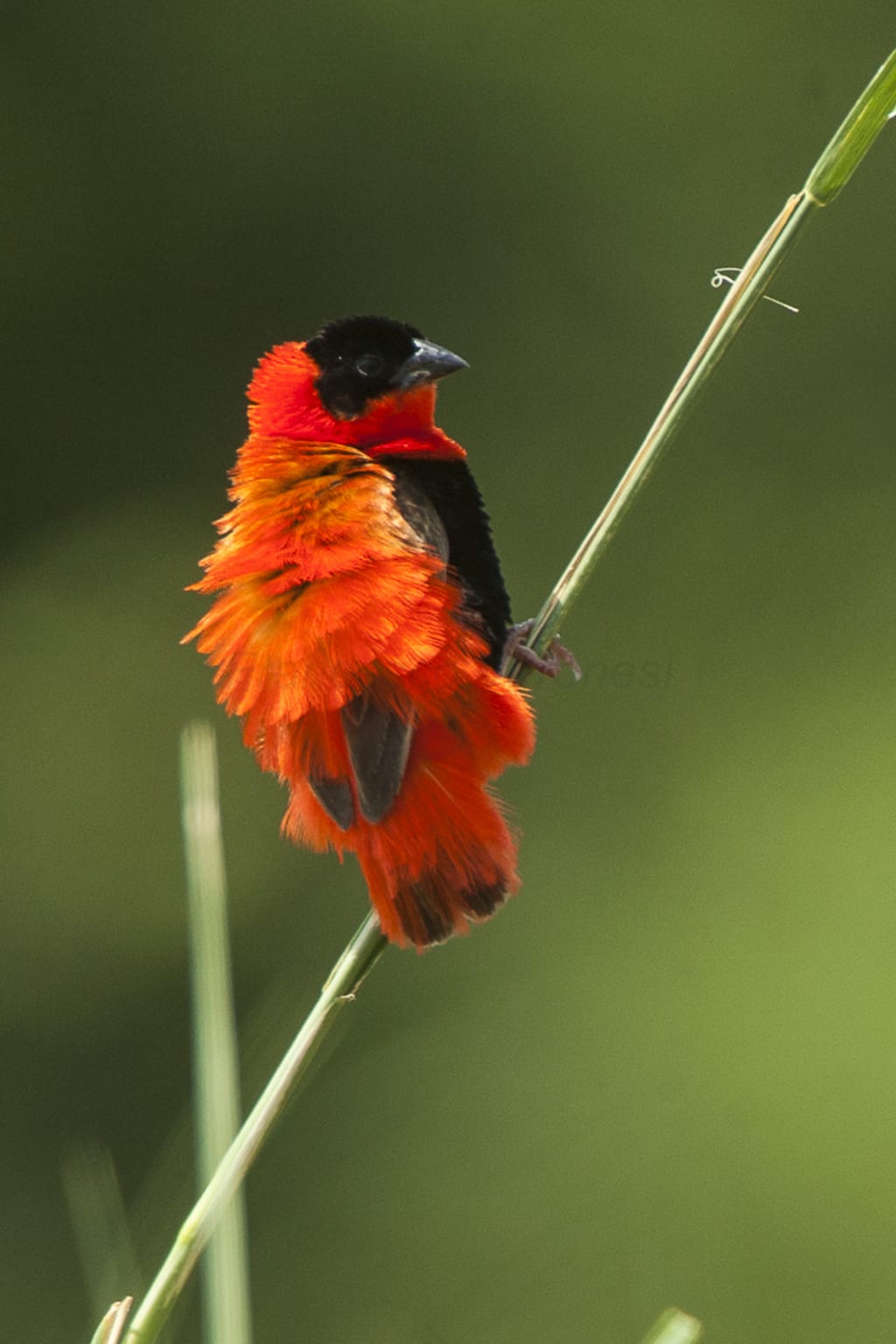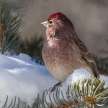
A small passerine bird in the family Ploceidae is the northern red bishop or orange bishop (Euplectes franciscanus). This is one of the world's largest family, with more than 60 distinct members. Its sister group is the Southern Red Bishop. The bright reddish orange with matching black plumage that the breeding male represents makes this species readily recognisable. It is most common on the northern African continent but has also extended to parts of the west hemisphere. The short-tailed bishop is small, about 11 cm long, and weights about 12-22 grammes. The distinctive red-orange feathers are made from pigments derived from compounds in their food. The yellow, orange, and red pigments derive predominantly from compounds called carotenoids which are extremely diet-dependent. Lutein and two red fractions derived from lutein are the two main carotenoids in the wild which contribute to the pigment of the bird.
The carotenoid R2 red fraction of their diet is absent from northern red bishops held in captivité. This plumage is seen on the back of the male and wraps up to the back of the head, neck and breast with a dark black crown, eyebrows, flank and belly around the chin. The tail and upper wings are brown, with white legs and a black bill. This plumage, the identificator of the Northern Red Bishops, is present only in the breeding males. Females and non-breeding males have a mixed brown and white feather pattern, similar to a song sparrow. Males starting the breeding season turn into this colourful and flashy plumage and eventually, moulding these show feathers at the end of the breeding season, to produce plumage similar to that of females. In Northern Africa the red northern bishop has a wide variety.
The species is polygynous and sexually dimorphic, and the males are larger than the females. The genus Euplectes is notorious for the sexually chosen characteristics, including elaborate displays and elongated feathers on the neck. For companions, the bright orange-to-yellow plumage with a contrasting dark black shading serves as a lure. During the breeding season, the male's singing pattern is very monotonous with little variation from season to season, and males can not even sing at all in the nonbreeding season. Studies of neural interaction between song and plumage colour revealed the hyperstriatum ventralis, and the robust archistriatum nucleus (RA) are neural structures involved in modulation of songs. Possibly due to elevated androgen levels at the time, both the HVc and RA rise significantly in volume during the breeding season. By contrast, the sizes of these devices differ considerably between the sexes, with a male having an RA greater than twenty times that of the female.
The extent of sexual dimorphism within these structures is greater than that of other songbirds. This species is polygynous, with males also suiting up to six females, males use their plumage to display flight to attract females, while their body plumage is puffed up. Courtship begins before a female enters in, leading to males creating globular nests for their mate. The females in turn line the nest for its future offspring. The more beautiful males who build the best nests and have a higher quality habitat tend to have greater reproductive ability, suggesting males have a strong sexual choice to have the more colourful plumage and establish nests in high-quality territories.
Females then provide all the parental care for their offspring, including incubating and feeding. Males neither prey on their offspring nor do they forage. Nests are usually created from various grasses and reeds put within the marshy vegetation. Nestling time will last 14-16 days. The breeding seasons can range from start as early as May to finish as late as November and last from 2-6 months, depending on the start and end of the rainy season. This species tends mainly to feed on grass seeds but is also known to eat insects. The millet seeds are said to be favoured. They have also been known to feed on aquatic and cocklebur species. In late winter and springtime some birds were seen visiting seed feeders. They usually forage stems on the ground or within grass and weeds, thereby catching insects on the ground as well as in air.
About the Creator
MB
I am a bird aficionado and really enjoy spotting them them on hikes. I greatly appreciate the variety of birds cross North America and the world. They are amazing and intelligent creatures, each so unique and with a wonderful life.






Comments
There are no comments for this story
Be the first to respond and start the conversation.